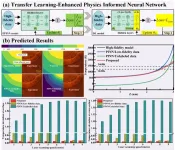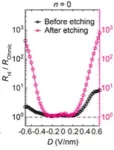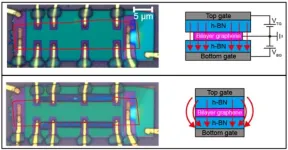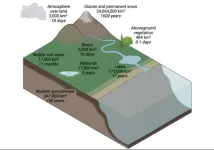Transfer learning-enhanced physics-informed neural network (TLE-PINN): A breakthrough in melt pool prediction for laser melting
2025-01-10
(Press-News.org) Researchers have developed a transfer learning-enhanced physics-informed neural network (TLE-PINN) for predicting melt pool morphology in selective laser melting (SLM). This novel approach combines physics-informed constraints with deep learning techniques, achieving superior accuracy, faster training times, and reduced computational demands. Published in Advanced Manufacturing, this breakthrough has significant potential to improve the efficiency of SLM processes, enable intelligent real-time process control, and enhance manufacturing quality.
Selective Laser Melting (SLM) has emerged as a transformative technology in additive manufacturing, enabling the production of high-precision metal components for industries such as aerospace, automotive, and healthcare. However, accurately predicting melt pool morphology—a critical factor influencing material properties and process quality—remains a significant challenge. Traditional numerical simulations are computationally intensive and time-consuming, while purely data-driven models often lack physical consistency to capture the complex multi-physics nature of SLM.
To address this issue, researchers from Wuhan University have developed a transfer learning-enhanced physics informed neural network (TLE-PINN) method that combines enhanced EPINN with deep learning models through a transfer learning framework. This novel approach drastically reduces computational costs while achieving high prediction accuracy.
“This method represents a significant advancement in additive manufacturing,” explains Professor Yaowu Hu. “By integrating physics-informed modeling with transfer learning, TLE-PINN bridges the gap between traditional numerical simulations and artificial intelligence, offering precise and efficient solutions for predicting melt pool morphology.”
The EPINN component of the TLE-PINN framework enforces strong physical constraints during training by incorporating heat transfer equations and boundary conditions directly into the neural network’s loss function. This ensures that the model accurately represents the melt pool morphology, even in complex scenarios. Meanwhile, the transfer learning framework fine-tunes the model using high-fidelity data, updating only the final layers while freezing earlier network parameters. This process significantly enhances training efficiency and computational scalability.
A critical challenge in SLM is balancing computational efficiency with prediction accuracy. Traditional models require significant computational resources, making them impractical for real-time applications. TLE-PINN overcomes this limitation by leveraging physics laws and transfer learning to streamline training and inference processes, achieving superior performance while minimizing resource requirements. “This design offers a unique combination of speed and accuracy, making it particularly suitable for industrial applications,” adds Professor Hu.
To validate the framework, the research team conducted extensive simulations and experiments. Using 42CrMo steel samples, the model predicted melt pool morphology across a range of laser scanning speeds (1–9 mm/s). Experimental results confirmed the TLE-PINN framework’s superior accuracy, with predictions closely matching high-fidelity simulation data and experimental measurements. Compared to traditional PINN and data-driven methods such as Random Forest and XGBoost, TLE-PINN demonstrated significantly lower temperature deviations and more consistent results, highlighting its robustness and reliability.
The framework’s computational efficiency is another key advantage. While traditional models require extensive training time and computational power, TLE-PINN achieves faster convergence with reduced computational demand, making it a cost-effective solution for large-scale manufacturing applications. Its scalability and adaptability also ensure compatibility with a wide range of SLM parameters and material types, further broadening its potential applications.
Looking ahead, this method holds great promise for broad application in SLM online process control and manufacturing optimization, providing intelligent solutions for real-time adjustments and enhanced efficiency. The researchers are also exploring ways to expand the framework’s capabilities to handle more complex material systems and larger parameter ranges, which could enable even greater adaptability in industrial scenarios.
While further refinements are needed to fully capture the complexities of melt pool behavior under diverse manufacturing conditions, this study represents a critical step toward integrating artificial intelligence with physics-based modeling for smarter and more efficient manufacturing.
The paper, titled “Transfer Learning-Enhanced Physics-Informed Neural Network for Accurate Melt Pool Prediction in Laser Melting,” was published in Advanced Manufacturing.
Zhu Q, Lu Z, Hu Y. Transfer learning-enhanced physics informed neural network for accurate melt pool prediction in laser melting. Adv. Manuf. 2025(1):0001, https://doi.org/10.55092/am20250001.
END
[Attachments] See images for this press release:


ELSE PRESS RELEASES FROM THIS DATE:
2025-01-10
In the quest to address contemporary health challenges and advance medical science, the concept of Holistic Integrative Medicine (HIM) emerges as a pivotal approach. This paradigm emphasizes the integration of medical knowledge and practices, advocating for a shift from traditional, fragmented medical models to a more comprehensive and human-centered system. HIM represents a conscious evolution in medical thought, aiming to align with the holistic needs of patients and the complex dynamics of health and disease. It underscores the importance of dimensionality reduction and differentiation as ...
2025-01-10
Electron transport in bilayer graphene exhibits a pronounced dependence on edge states and a nonlocal transport mechanism, according to a recent study led by Professor Gil-Ho Lee and Ph.D. candidate Hyeon-Woo Jeong of POSTECH’s Department of Physics, in collaboration with Dr. Kenji Watanabe and Dr. Takashi Taniguchi at Japan’s National Institute for Materials Science (NIMS). The findings were published in the international nanotechnology journal Nano Letters.
Bilayer graphene, comprising two vertically stacked graphene layers, can exploit externally applied electric fields ...
2025-01-10
MINNEAPOLIS – The American Academy of Neurology announces today its newest journal, Neurology® Open Access, which joins the flagship journal Neurology® and its four subspecialty journals. The new online peer-reviewed journal publishes original research articles, scholarly reviews, case reports and study protocols in all areas of neurology and the clinical neurosciences.
Editor-in-Chief of Neurology® José G. Merino, MD, MPhil, FAAN, FAHA, said, “The new journal complements the lineup of the Neurology® ...
2025-01-10
An independent study by researchers from the London School of Hygiene & Tropical Medicine (LSHTM) suggests the Palestinian Ministry of Health in Gaza underreported the death toll due to violence by approximately 41%.
The LSHTM study estimated 64,260 traumatic injury deaths in Gaza between 7 October 2023 and 30 June 2024 compared to the 37,877 reported by the Palestinian Ministry of Health.
The findings, published in The Lancet, indicate that approximately 3% of the population of Gaza has died due to violence with an analysis showing ...
2025-01-10
MIAMI, FLORIDA (EMBARGOED UNTIL JAN. 9, 2025 AT 6:30 P.M. EST) – Even though lung and related cancer deaths decreased in the world’s 10 most populous countries from 1990 to 2019, these positive statistics do not address trends in mortality linked to tobacco use, air pollution and asbestos exposure. Those areas need ongoing policy measures and research to further reduce deaths, according to a new study from researchers at Sylvester Comprehensive Cancer Center, part of the University of Miami Miller School of Medicine, and collaborating organizations.
Their study, published in eClinicalMedicine, ...
2025-01-10
A series of more than 100 small earthquakes in Surrey in 2018 and 2019 might have been triggered by oil extraction from a nearby well, suggests a new study by UCL researchers.
The earthquakes, which occurred in Newdigate and surrounding areas from April 2018 until early 2019, were recorded as being between 1.34 and 3.18 magnitude, and were linked to cracks in walls and ceilings and other damage to people’s homes, with reports of houses and beds shaking.
Geologists have been divided over whether these earthquakes could have been triggered by extraction at the Horse Hill well in Horley about 5km ...
2025-01-10
Launch of world’s most significant protein study set to usher in new understanding for medicine
Strict embargo: 00.01 (GMT), Friday 10 January 2025
UK Biobank has today announced the launch of the world’s most comprehensive study of the proteins circulating in our bodies, which will transform the study of diseases and their treatments. This unparalleled project aspires to measure up to 5,400 proteins in each of 600,000 samples, including those taken from half a million UK Biobank participants and 100,000 second samples taken from these volunteers up to 15 years later. This will ...
2025-01-09
Orange, California - January 9, 2025: A new study led by scientists in the Schmid College of Science and Technology at Chapman University provides the first comprehensive global estimates of the amount of water stored in Earth’s plants and the amount of time it takes for that water to flow through them. The information is a missing piece of the puzzle in understanding the global water cycle and how that cycle is being altered by changes in land use and climate.
The study, published today, January 9, in the journal ...
2025-01-09
On December 24th, AES Andes, a subsidiary of the US power company AES Corporation, submitted a project for a massive industrial complex for environmental impact assessment. This complex threatens the pristine skies above ESO’s Paranal Observatory in Chile’s Atacama Desert, the darkest and clearest of any astronomical observatory in the world [1]. The industrial megaproject is planned to be located just 5 to 11 kilometres from telescopes at Paranal, which would cause irreparable damage to astronomical observations, in particular due to light pollution emitted throughout the project’s operational life. Relocating the complex would save one ...
2025-01-09
Irvine, Calif., Jan. 9, 2025 — An international research team led by the University of California, Irvine has discovered a new type of skeletal tissue that offers great potential for advancing regenerative medicine and tissue engineering.
Most cartilage relies on an external extracellular matrix for strength, but “lipocartilage,” which is found in the ears, nose and throat of mammals, is uniquely packed with fat-filled cells called “lipochondrocytes” that provide super-stable internal support, enabling ...
LAST 30 PRESS RELEASES:
[Press-News.org] Transfer learning-enhanced physics-informed neural network (TLE-PINN): A breakthrough in melt pool prediction for laser melting





